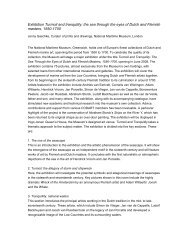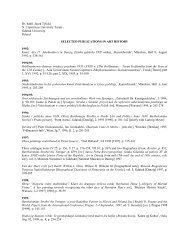courant 7 - CODART
courant 7 - CODART
courant 7 - CODART
Create successful ePaper yourself
Turn your PDF publications into a flip-book with our unique Google optimized e-Paper software.
5 codart Courant 7/December 2003<br />
the main storeroom had risen to a height of<br />
around 50 cm. The darkness, falling picture<br />
hooks and the participation of people who had<br />
no experience of handling works of art made<br />
the evacuation a very risky procedure for all<br />
involved and for the works of art. By around<br />
5 p.m., all but six of the gallery’s large-scale<br />
paintings and a few canvases without<br />
stretchers, which were rolled up around large<br />
drums, had been brought to safety. The<br />
remaining works of art, whose size meant that<br />
they could only have been transported by way<br />
of the freight elevator, had to remain in the<br />
stores, and ropes were used to tie them as<br />
closely as possible to the ceiling. This spectacular<br />
operation turned out to have a been a<br />
very good move, as the water that flooded all<br />
of the storerooms over the course of a week<br />
finally came to a stop around one meter from<br />
the ceiling. As the two deepest storerooms<br />
were flooded completely on 13 August, no<br />
further rescue attempts, aimed at saving the<br />
frames, for example, were possible.<br />
On the following night, water levels in the<br />
storerooms and other areas beneath ground<br />
level including the entrance hall, the<br />
important underground machine rooms and<br />
operational areas of the gallery, and the<br />
workshops, rose to a height of 150 cm. The<br />
deepest underground storerooms had already<br />
completely flooded by this point and no access<br />
had been possible for some time.<br />
In the course of the following days,<br />
particularly after the second wave of high<br />
water at the end of the week (16-18 August),<br />
which was now coming in from the direction<br />
of the Elbe, further efforts were made to reduce<br />
the level of water in the underground gallery<br />
The Gemäldegalerie Alte Meister in Dresden during the floods in August 2002.<br />
spaces using high-efficiency pumps from<br />
various fire services and from a technical relief<br />
organization in order to protect the large-scale<br />
paintings still in the main storage room. The<br />
often desperate attempts of the gallery staff to<br />
get sufficient equipment and vehicles to carry<br />
out this task were unfortunately not<br />
supported, and in some respects were actually<br />
hindered, by the leaders of the city’s<br />
emergency task force.<br />
On Wednesday, 14 August, staff embarked<br />
on an emergency inventory of all 2,690<br />
salvaged works of art and 255 frames in order<br />
to ascertain the condition of the collections.<br />
To great all-round relief, it was established<br />
that not one single work was missing. The<br />
final balance of the effects of the flood disaster<br />
on the works of art was remarkable: apart from<br />
17 unstretched canvases that were rolled on<br />
drums, which had become wet in parts, all the<br />
pictures from the Gemäldegalerie Alte Meister,<br />
including those which had been suspended<br />
beneath the ceiling of the storehouse, had<br />
survived the evacuation without significant<br />
damage. However, the 321 historic frames that<br />
had to be left behind in the deepest storerooms<br />
beneath Theaterplatz fell victim to the flood.<br />
The situation in the building, on the other<br />
hand, parts of which had been under water for<br />
around two weeks, was devastating, and<br />
meant that the gallery had to be closed to the<br />
public for some time. In addition to the<br />
storerooms and the workshops in the cellar<br />
area, all the technical control centers of the<br />
gallery, such as the air-conditioning, the<br />
elevators, and the electrical, heating and<br />
security systems, had been completely<br />
destroyed. The essential temporary air-<br />
conditioning for the packed exhibition rooms<br />
was installed immediately, using mobile units<br />
lent by other institutions and museums. The<br />
gallery had to be used as a storeroom, and this<br />
was another reason why it remained closed<br />
until November 2002.<br />
Parallel to the clean-up work, which began<br />
immediately, and to which many gallery staff<br />
once more devoted themselves wholeheartedly,<br />
the restoration of the damaged<br />
large-format paintings and rolled pictures was<br />
tackled by freelance restorers and by students<br />
from the Dresden Hochschule für Bildende<br />
Künste. Thanks to various generous donations,<br />
this restoration work could begin immediately<br />
and is still continuing today. In addition to<br />
these donations, in the weeks that followed we<br />
received many letters from all over the world<br />
from museum colleagues, from restorers and<br />
from private individuals, offering many<br />
different kinds of help and support. We were<br />
very moved by all these expressions of<br />
sympathy and by the support that was offered,<br />
and would like to take this opportunity to<br />
thank everyone once more, because it was not<br />
possible to respond to every letter last year.<br />
The damage to our workshops and to the<br />
technical ‘hinterland’ of the art gallery has<br />
seriously hindered our work during the whole<br />
of the past year, even though the gallery itself<br />
may once more be admired in its former glory.<br />
Fortunately, a year having passed, it is now<br />
also possible for us to use our flooded<br />
workshops without restriction. The storeroom<br />
situation, on the other hand, is still most<br />
unsatisfactory, as we can no longer use the<br />
former underground storerooms. The pictures<br />
that are not on display are currently being kept<br />
in a temporary storeroom on the northern<br />
edge of Dresden. This has caused a great<br />
number of problems for the day-to-day<br />
running of the museum. Plans are being made<br />
for the construction of a modern storage<br />
building in the near future, and the directors<br />
of the Staatliche Kunstsammlungen Dresden<br />
propose that this should be situated in the city<br />
centre. This would make a definite<br />
improvement to working conditions in the<br />
gallery.<br />
Uta Neidhardt<br />
Staatliche Kunstsammlungen Dresden,<br />
Gemäldegalerie Alte Meister<br />
Translated from the German by Laura Watkinson


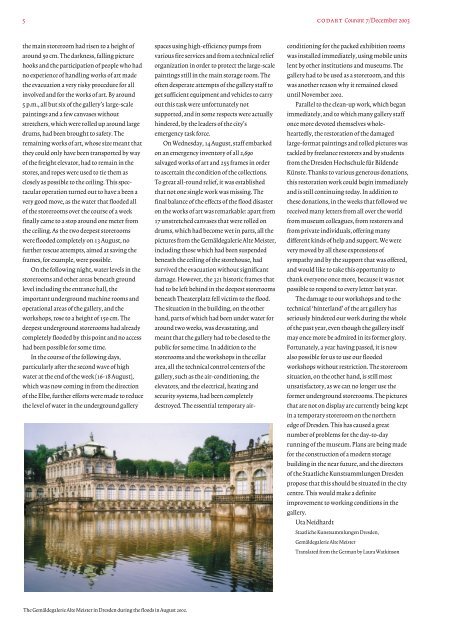
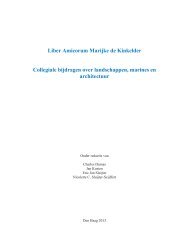
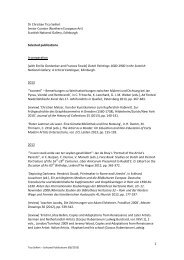

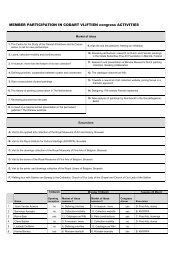

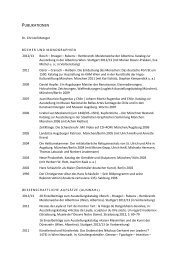

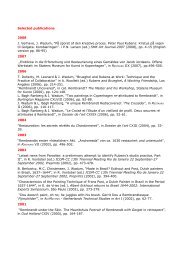
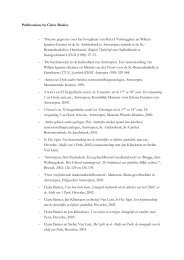
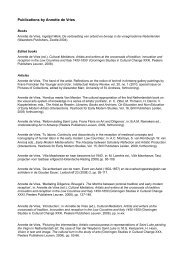
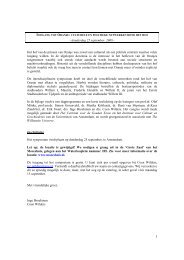
![curriculum [wim] - CODART](https://img.yumpu.com/19451661/1/184x260/curriculum-wim-codart.jpg?quality=85)
![curriculum [wim] - CODART](https://img.yumpu.com/19451660/1/184x260/curriculum-wim-codart.jpg?quality=85)
